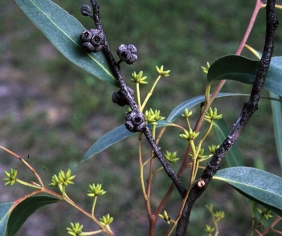BioNet Web Service issue
There is currently a known issue when users attempt to download large volumes of data from the BioNet Web Service, resulting in an error. This impacts some of the existing BioNet power queries available via the BioNet Resources web page. Work is currently underway to investigate and resolve this issue. Apologies for the inconvenience.
For support, please reach out to us via bionet@environment.nsw.gov.au
The Integrated BioNet Vegetation Data (IBVD) program modernises how we work with vegetation classification and map data by providing a suite of logically related foundational information products based on a single classification framework and map for the state.
Watch the video: Introduction to Integrated BioNet Vegetation Data for New South Wales.
Vegetation classification data and maps are combined to provide a single resource stored in BioNet and discoverable on the SEED (Sharing and Enabling Environmental Data) portal.
We have designed the Integrated BioNet Vegetation Data program to support users undertaking land management activities and biodiversity assessments.
BioNet allows vegetation classification and map data to link to other biodiversity information commonly applied in biodiversity assessments, including threatened ecological communities and threatened species data.
Integrated BioNet Vegetation Data is an important ongoing program to develop and maintain publicly available high-quality native vegetation classification and map products for New South Wales.
Latest news
- The first annual update of Integrated BioNet Vegetation Data was released in December 2023, including plant community type (PCT) master list version C2.0 and State Vegetation Type Map (SVTM) version C2.0M2.0. It incorporates user feedback and new field survey data compiled since version C1.1 was released in June 2022. This is part of the ongoing effort to continuously improve the State Vegetation Type Map and the NSW plant community type classification.
- The Trees Near Me NSW mobile app and website are available for quick and easy access to the State Vegetation Type Map.
- The Plot to PCT Assignment Tool is available, making identifying the correct plant community type easier using standard floristic survey plot data in eastern New South Wales.
- Integrated BioNet Vegetation Data is available in BioNet web services, which are open, transparent, and available for use in your own application and business systems.
What data are included in the Integrated BioNet Vegetation Data program?
NSW vegetation classification hierarchy
Plant community type descriptions and data are maintained in the BioNet Vegetation Classification application.
This includes the vegetation class and vegetation formation, in which each plant community type is nested.
For more information about the plant community type classification program, visit the NSW plant community type classification webpage.
A summary list of plant community types is available by clicking download on the BioNet Plant Community Type Data page.
State Vegetation Type Map
The State Vegetation Type Map covers individual plant community types, vegetation classes and vegetation formations.
For more information about the map, visit the State Vegetation Type Map webpage.
Access the map directly from the SEED (Sharing and Enabling Environmental Data) portal or Trees Near Me NSW.
BioNet flora survey plots
Standard floristic survey plots are maintained in the Flora survey module of the BioNet Atlas application.
Plots used in defining plant community types in eastern New South Wales provide reference points for plant community types.
View plant community type reference plots on the SEED (Sharing and Enabling Environmental Data) portal.
Threatened species and threatened ecological community plant community type associations
New South Wales and nationally listed threatened species, populations and threatened ecological communities (TECs) are expertly associated with plant community types, vegetation classes, and vegetation formations. This indicates potential threatened species habitat or the potential presence of a threatened ecological community. Threatened species, threatened populations and threatened ecological community plant community type associations can be downloaded.
Vegetation condition benchmarks
Vegetation condition benchmarks provide a framework for measuring the integrity of vegetation used in the Biodiversity Assessment Method.
Benchmark data are maintained in the BioNet Vegetation Classification application.
What tools and applications are linked to Integrated BioNet Vegetation Data?
SEED (Sharing and Enabling Environmental Data) portal
Trees Near Me NSW application
 The Trees Near Me NSW app – winner of Gold in the GOV Design Awards 2023.
The Trees Near Me NSW app – winner of Gold in the GOV Design Awards 2023.
Trees Near Me NSW delivers map and plant community type information in an easy-to-use mobile app and website. It allows users to find information on plant community types within 200 metres, 400 metres and 1,000 metres of any location in New South Wales.
Plot to PCT Assignment Tool
The Plot to PCT Assignment Tool is a plant community type identification tool for eastern New South Wales. It allows users to upload standard floristic survey plots to obtain a robust comparison to the quantitative plant community type classification. It provides detailed downloadable information about each matched plant community type.


 The Trees Near Me NSW app – winner of Gold in the
The Trees Near Me NSW app – winner of Gold in the 